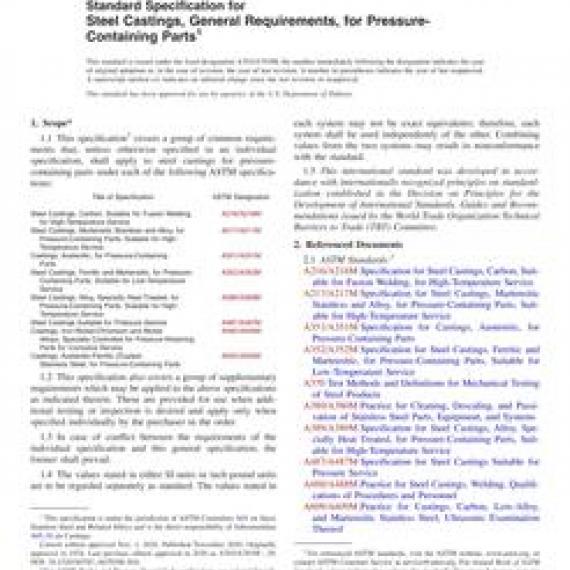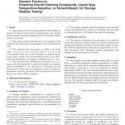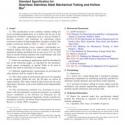No products
ASTM A703/A703M-20a
ASTM A703/A703M-20a Standard Specification for Steel Castings, General Requirements, for Pressure-Containing Parts
standard by ASTM International, 11/01/2020
Full Description
1.1This specification2 covers a group of common requirements that, unless otherwise specified in an individual specification, shall apply to steel castings for pressure-containing parts under each of the following ASTM specifications:
| Title of Specification | ASTM Designation | |
| Steel Castings, Carbon, Suitable for Fusion Welding, | A216/A216M | |
| for High-Temperature Service | ||
| Steel Castings, Martensitic Stainless and Alloy, for | A217/A217M | |
| Pressure-Containing Parts, Suitable for High- | ||
| Temperature Service | ||
| Castings, Austenitic, for Pressure-Containing | A351/A351M | |
| Parts | ||
| Steel Castings, Ferritic and Martensitic, for Pressure- | A352/A352M | |
| Containing Parts, Suitable for Low-Temperature | ||
| Service | ||
| Steel Castings, Alloy, Specially Heat-Treated, for | A389/A389M | |
| Pressure-Containing Parts, Suitable for High- | ||
| Temperature Service | ||
| Steel Castings Suitable for Pressure Service | A487/A487M | |
| Castings, Iron-Nickel-Chromium and Nickel | A990/A990M | |
| Alloys, Specially Controlled for Pressure-Retaining Parts for Corrosive Service | ||
| Castings, Austenitic-Ferritic (Duplex) | A995/A995M | |
| Stainless Steel, for Pressure-Containing Parts | ||
1.2This specification also covers a group of supplementary requirements which may be applied to the above specifications as indicated therein. These are provided for use when additional testing or inspection is desired and apply only when specified individually by the purchaser in the order.
1.3In case of conflict between the requirements of the individual specification and this general specification, the former shall prevail.
1.4The values stated in either SI units or inch-pound units are to be regarded separately as standard. The values stated in each system may not be exact equivalents; therefore, each system shall be used independently of the other. Combining values from the two systems may result in nonconformance with the standard.
1.5This international standard was developed in accordance with internationally recognized principles on standardization established in the Decision on Principles for the Development of International Standards, Guides and Recommendations issued by the World Trade Organization Technical Barriers to Trade (TBT) Committee.


































